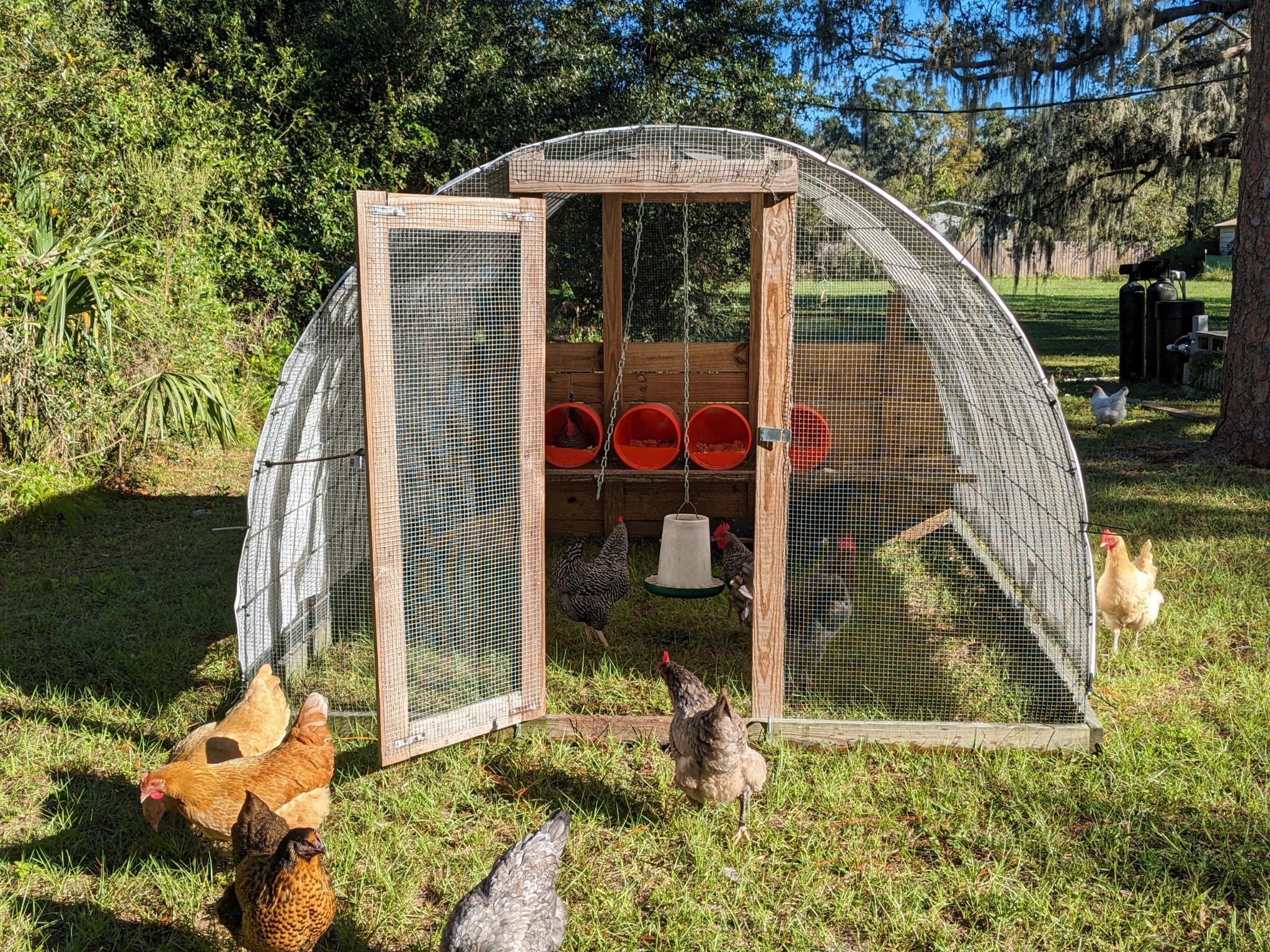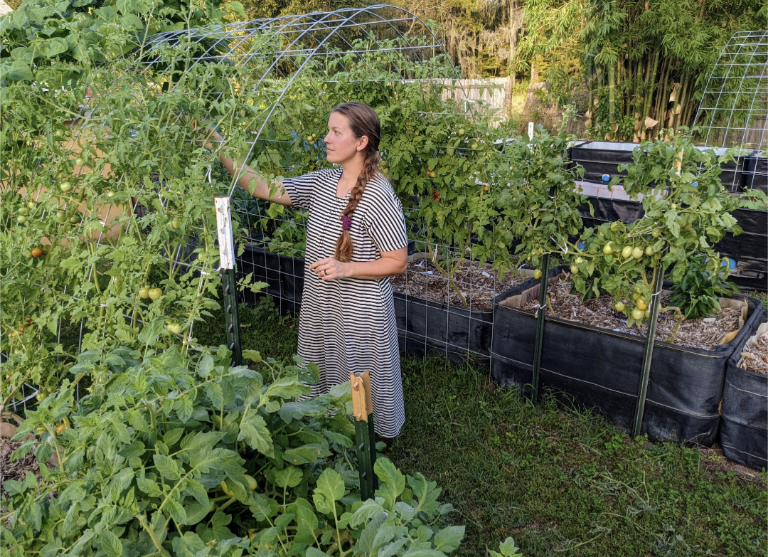Keeping Backyard Chickens the EASY Way
Keeping Backyard Chickens the EASY Way
Keeping chickens is one of the absolute easiest ways to become a little more self-sufficient—and I’m here to show you just how simple it can be. For the past four years, we’ve been raising chickens on what I like to call “easy mode,” and it’s been an absolute game-changer for our homestead.
There are a ton of how-to videos and blog posts out there, but the truth is: no one can give you a perfect formula. Your setup will depend on your property, your climate, your goals, and your flock. What I can do is share what’s worked for us, so you can see just how doable this really is—and maybe even pick up a few tips along the way.
If you would prefer, you can also watch a video where we discuss some of these things in more detail down below :)
The Most Important Thing
If you remember one thing from this post, let it be this: keeping chickens doesn’t need to be complicated, expensive, or Pinterest-worthy. Your setup just needs to work—for you and for your birds. That means healthy chickens and fresh eggs straight from the backyard to the kitchen. That’s it.
Let’s Talk About Shelter
When it comes to the shelter for chickens, we’re big fans of the chicken tractor. It’s cost-effective, easy to clean, well-ventilated, and portable. Ours is 8ft x 10ft and comfortably houses 30–40 chickens that free range during the day. We can move it to fresh grass every few days—no poop-scooping required. And if you can’t let your chickens free range…no problem! You can still use this design with fewer number of chickens & move it to fresh grass once a day. This allows them the pastured poultry benefits while being safe from predators!
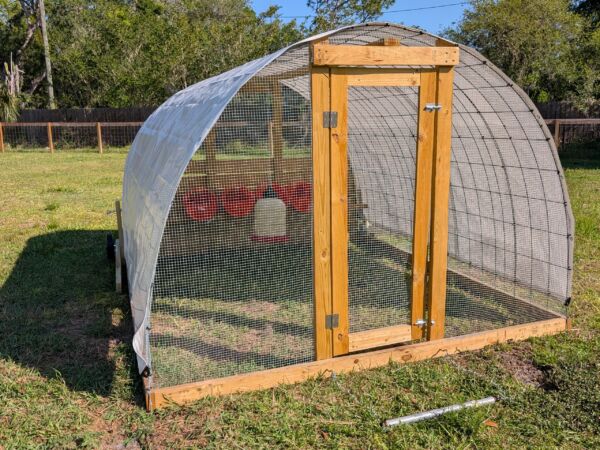
If you want our plans to build a chicken tractor like this for your own flock, you can find them here!
Pro tip: Plan for “chicken math.” You may think you want 4-6 birds… until you realize how much you love having them around. Build a coop or chicken tractor with expansion in mind!
Ventilation is Crucial
This is one of the most underrated parts of chicken keeping. Chickens poop a lot—especially while they sleep—and all that ammonia buildup is not good for their respiratory health (or yours). Whether you live in a hot or cold climate, proper airflow is non-negotiable. You may choose to have less airflow than we do in our chicken tractor, but you’ll still need to take the topic of ventilation seriously!
Cleaning: Keep It Low-Maintenance
If cleaning a coop sounds like a chore you’ll dread, plan ahead. There are really two main super simple cleaning methods:
-
Utilizing a chicken tractor: Just move it to fresh grass every couple of days. Done.
-
Deep litter method: Add fresh bedding (like pine shavings, woodchips, or straw) every week. The old bedding composts underneath, and you only clean it out 1–2 times a year.
We chose the chicken tractor because of our rainy climate—the ground can get too soggy for deep litter. But both options are solid.
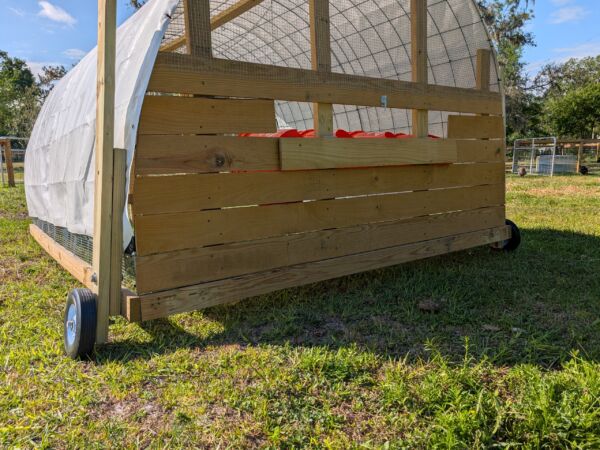
Predator Protection
Here’s a hot take: chicken wire is basically useless. It’s flimsy, and predators can easily break through it.
Instead, use hardware cloth—a 1″ x 1″ sturdy mesh—to cover your coop and run. It’s a simple switch that makes a huge difference. We also added a wooden back halfway up our tractor to give the birds privacy and extra protection.
Feeding Chickens the Easy Way
We keep feeding simple: no fancy supplements or overpriced organic brands. We buy affordable feed from our local store and scatter it directly on the ground.
Why? Because when feed is spread out, chickens don’t fight over it. Everyone gets a fair share, and they get to scratch and peck—just like nature intended.
We also give them all kinds of kitchen scraps, from veggie peels and leftover eggs to birthday cake. They’ll eat what they like and leave what they don’t. I don’t stress about what they “shouldn’t have” and instead just let them pick through our kitchen leftovers as they will.
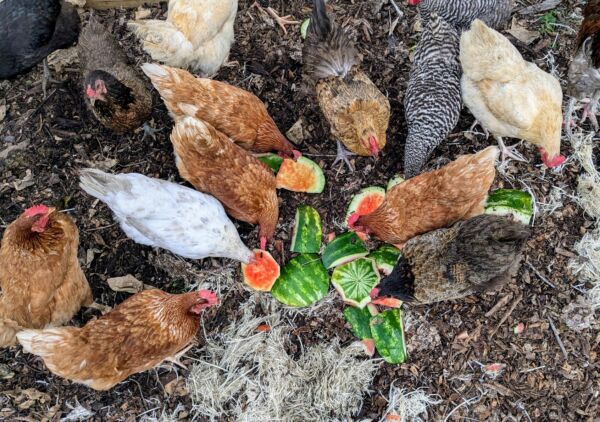
Fresh Water—Non-Negotiable
Access to clean, fresh water is more important (in my opinion) than even feed. For our free-ranging layers, we use an open tub—easy to clean, easy to refill. We don’t add any supplements or apple cider vinegar. Just water.
If your birds stay in a coop or run, a hanging waterer might work better. Just make sure it’s always full and clean.
Fencing & Free Ranging
Chickens tend to stick close to home—they’re not really looking to escape. But you do need to think about fencing if for things like:
-
You have a garden you want to protect
-
You don’t want poop on your deck or patio
-
You’re dealing with stray dogs or digging predators
- You have neighbors close by that wouldn’t want the chickens in their yard
For us, a perimeter fence became necessary once we added other animals (and a dog), but it wasn’t something we had from the start. We have about 2 acres and our chickens didn’t leave the property. You can always start small and build up as needed.
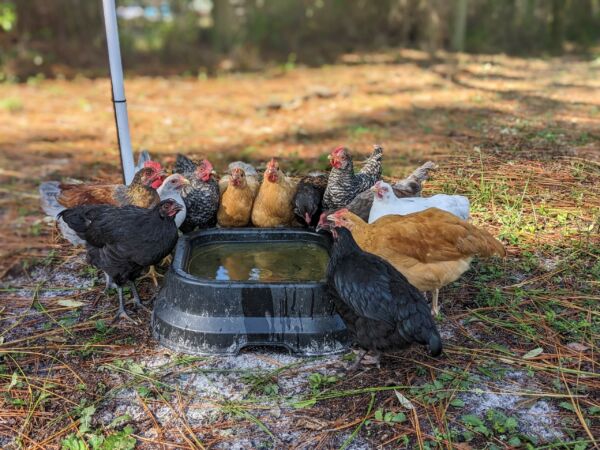
Our Daily Routine
People are always surprised when I say chickens are easier to care for than a dog—but it’s true! Here’s what our typical day looks like:
-
Morning (around 8:30–9:30am): Scatter feed, refill water, refresh shavings in the nesting box if necessary, let the chickens out to free range, and move the chicken tractor forward.
-
Late afternoon: Toss out scraps and collect eggs (they’re usually done laying by 4pm).
-
Evening: Chickens put themselves to bed—we just close the tractor door.
That’s it! 10–15 minutes a day, tops.
Chickens are such a valuable (and fun!) part of any homestead. Fresh eggs, free fertilizer, bug control—and they’re just plain cute. But more than anything, they are easy to keep when you have the right systems in place.
So if you’re feeling overwhelmed by all the chicken advice out there, take a deep breath. Start simple. Start small. And remember: your setup doesn’t have to be fancy—it just has to work.
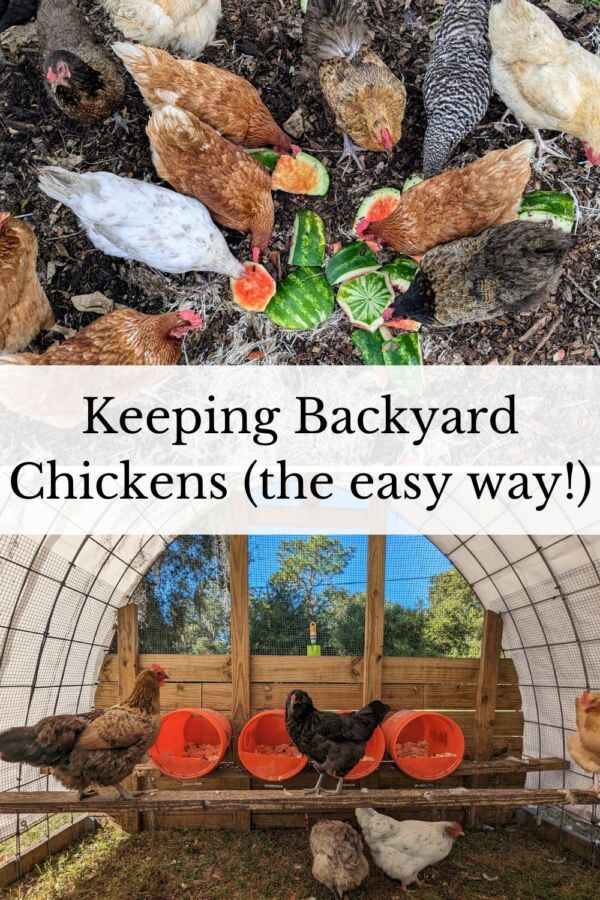
If you want our plans to build a chicken tractor for your own flock, you can find them here!
